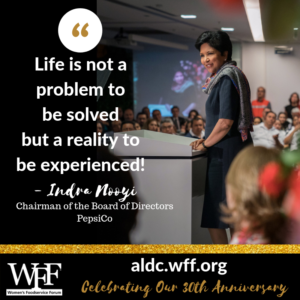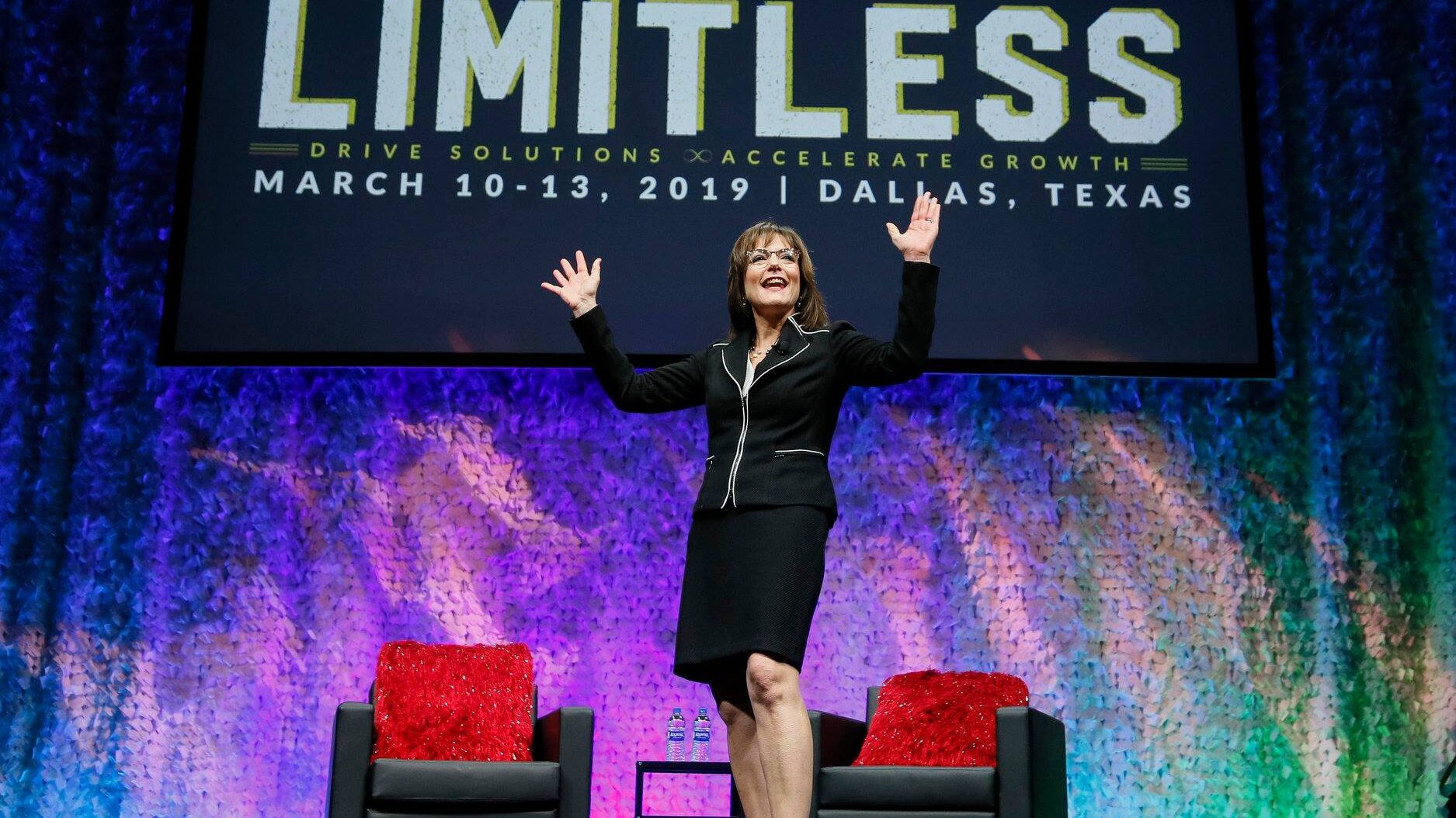Last week, I was lucky enough to attend the Women’s Foodservice Forum Annual Leadership Development Conference (ALDC). As my second year attending, I was already familiar with and prepared for the flood of career inspiration and sheer number of impressive female leaders representing some of the largest and most influential brands in the industry. And yet, what continued to amaze me was not just how remarkable this organization was as a whole, but how its successful strategies have inspired and continue to inspire a movement within the food industry.
This year marks the 30th anniversary of WFF. Ever since a roundtable discussion sparked inspiration among a panel of women in 1988, WFF has influenced the food industry to pursue greater gender equity in the workplace. As a woman, I felt empowered and excited for the future of the industry. As a marketer, I was impressed with WFF’s strategy, tactics and marketing mechanisms to inspire this movement. While some movements are organic in nature (lookin’ at you, Dancing Guy), others are a result of hard work, dedication and perseverance. WFF is certainly the latter.
Back in 1988, the food industry was highly male-dominated, particularly in the leadership ranks. Today, the industry is a bit more diverse than others when it comes to women in executive positions. According to a study by McKinsey & Co., 23% of C-suite executives in the food industry are women, as compared to all C-suites where only 20% are women. Though as the second largest employer of women in the U.S. and only 23% in C-suites, there’s still plenty of room for growth in the food industry. In fact, women make up almost half the entry-level workforce in the food industry, yet we’re underrepresented across the board above this level. This is where WFF comes in – to reduce the talent gap by equipping women with greater skills to score those leadership positions.
WFF strongly believes that building relationships and making meaningful connections with colleagues, peers and mentors is one of the most effective ways to develop skills, broaden perspectives and advance careers.Click To TweetOver the years, WFF has touched millions of women’s lives creating an influential “tribe” of leaders in the food industry. From the perspective of a marketer, here are 5 successful strategies WFF is excelling at making them a leader among leaders as they inspire change.
Build A Tribe
Creating a movement is about bringing together like-minded individuals that care about the same end goal. One panoramic glance around the ALDC’s opening session and you’ll see power women as far as the eye can see. From small group discussions, lunch & learns to happy hours, WFF is a master at crafting opportunities for greater access to and networking with industry leaders. Aside from similarities as career-oriented females, WFF takes it a step further – Communities of Interest. These micro-networks range from working mothers to LGBTQ, women of color to military families and more. And if you’re wondering – yes, men are a big part of WFF too. As the organization believes that together, with our male counterparts being advocates in the workplace, we’ll go farther faster.
Inspire from Within
Not only has WFF recognized the value of their powerful network of women leaders, they learn from them. By sharing members’ success stories, challenges and setbacks, breakthrough moments and career learnings – WFF members can relate and find inspiration in another’s personal experience. Such as PepsiCo’s Former Chairman and CEO Indra Nooyi speaking frankly about her “tummy rumblings” regarding the infamous Pepsi ad with Kendall Jenner and the internal changes they’ve made since to avoid it happening again. Or Red Robin Gourmet Burgers and Brews’ President and CEO Denny Marie Post speaking vulnerably about what resilience means to her using her mother’s tumultuous war-torn life as her shining example. Or last year when Michelle Obama (keynote speaker of 2017 WFF ALDC) related to working mothers by sharing the challenges of balancing work, motherhood and dual-career household (ahem, the White House). Using crowdsourcing as a key strategy for their primary source of content, WFF leverages their strong network of leaders as inspirational and relatable learnings for their members and future leaders.

Drive with Data
In addition to crowdsourcing inspiration, WFF is deeply grounded in research. Like this fun fact – McKinsey & Co determined it will take at least 100 years to reach gender parity in the C-Suite across industries at the current pace of change. WFF said, “nope, not in the food industry” (slight paraphrasing) and developed a research-driven “Success Roadmap” for driving gender equity specific to the food industry. Further, WFF convened 32 food companies to participate in the 2017 Women in the Workplace Study to identify where the most significant barriers to advancement lay and best practice solutions for moving beyond them. The bold truths paired with real-life inspiration keeps WFF and its members realistic and yet hopeful as they forge a path towards change.
Take It Cross-Country
While ALDC takes place in Dallas once a year, WFF hosts many leadership development workshops throughout the country. These one-day workshops are great opportunities for interested, new or young professionals to dip their toes into the WFF waters before committing to the big meet-up. Affordable and accessible, these workshops expand WFF’s network into smaller markets across the country. For the experienced leader, WFF’s Executive Summit provides top industry leaders a forum for greater collaboration that integrates them as thought leaders in WFF and the movement. Through these multiple touchpoints, WFF brilliantly reaches and inspires all stages of careers in the food industry – from young professionals just entering the workforce to senior executives making changes at the top.
Whole Is Greater Than the Sum of Its Parts
In addition to inspiring individual employees, WFF doesn’t skip a beat in educating and empowering the companies who employ these individuals too. Through partnership opportunities, international brands such as PepsiCo, Coca-Cola, Sysco, Aramark, Brinker International, US Foods and many more use ALDC as an incentive program for their employees who are excelling or on the path to a successful future. Plus, these large brands benefit by gathering their employees from cross-country offices for inner-office networking and team building. While most attendees are one within a group of 20-30 employees, some of WFF’s biggest supporters send over 150 employees to ALDC. These partnerships give brands an opportunity to show their commitment to gender equity internally with their employees and externally as a supporter of the broader movement.
Personally and professionally, there was much to takeaway from my time at the WFF Annual Leadership Development Conference. From celebrating the 30-year evolution of a movement, gathering all the professional inspiration I could absorb and perhaps most importantly, identifying the successful strategies that drive change are invaluable learnings for individuals and brands alike.
For more insights on communication and brand strategy, industry trends and more, subscribe today to the Weekly Buzz here.

